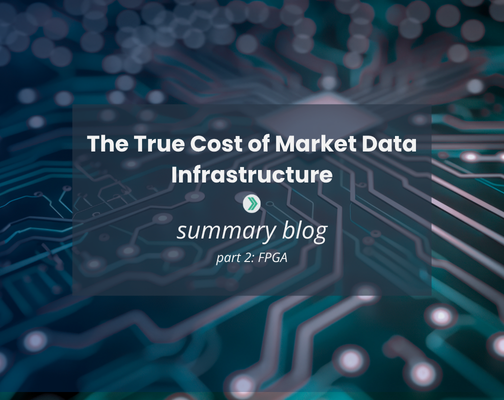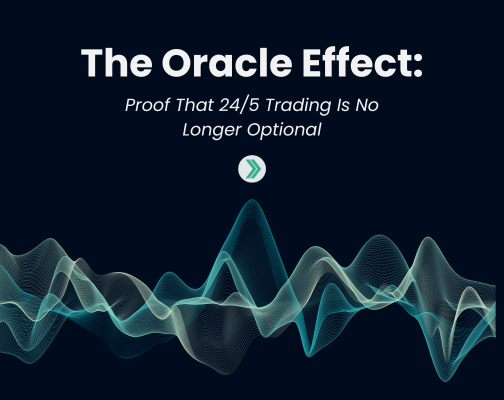How to Stop Alpha Decay with Infrastructure That Delivers Edge
Market makers and quant funds rely on their predictive edge, known as alpha, to make profitable trades. However, more than ever, alpha doesn’t last.
Alpha decay, when that predictive power diminishes over time, is becoming increasingly pronounced. As Maven Securities notes, this decay now poses a serious challenge for systematic traders, leading to poorly informed decisions and, ultimately, substantial financial loss.
Strategies that once delivered steady returns are now arbitraged away in hours, or even minutes. A profitable signal can become stale before a trade is even triggered.
This erosion of edge is a daily threat. It’s not just about developing more innovative models, it’s about executing them faster, before the signal fades. Because even when a strategy is working, it has a limited lifespan. Every day your infrastructure can’t run efficiently, that strategy becomes less profitable.
Preserving alpha now depends as much on infrastructure as it does on the strategy itself. In today’s markets, identifying a profitable signal isn’t enough, firms must also execute on it before the window closes. When infrastructure lags, even briefly, profitable ideas become missed opportunities.
Alpha is a Moving Target: What’s Driving the Faster Decay of Alpha
Alpha has always been elusive, but in today’s markets, it’s not just hard to find. It’s hard to hold on to.
A growing number of forces are accelerating the rate at which profitable signals lose their predictive power. What used to work for weeks or days may now only last for hours. This erosion is due to more complex and competitive market conditions.
1. Overfitting and Model Fragility
The rise of machine learning in quantitative finance has unlocked powerful new methods for detecting patterns and building trading strategies. But these models often come with a tradeoff: overfitting.
Strategies that perform well in backtests frequently fail to generalize in live markets. Small shifts in behavior, such as a temporary change in quote activity or liquidity conditions, can quickly break a signal, turning alpha into noise.
Yet even robust models falter when the very structure of markets is in flux.
2. Market Structure Volatility
Constant change in exchange behavior, pricing models, and data volumes adds another layer of uncertainty. Academic and industry research increasingly shows that market conditions themselves have become a source of alpha decay—with bursts, noise, and volatility outpacing the models designed to interpret them. For example, volatility clustering, where large market swings tend to be followed by more turbulence, creates persistent noise that models often fail to anticipate.
Empirical studies also find that in highly electronic markets, decay rates accelerate dramatically, with MicroAlphas estimating that predictive signals lose 5–10% of their effectiveness annually in U.S. and European markets, and even faster under stressed conditions (MicroAlphas, 2025).
3. Crowded Signals in a Speed-Driven Market
As more firms apply similar models to overlapping datasets, edge becomes increasingly diluted. Signals that once provided a clear advantage are now widely recognized—and widely acted on. This phenomenon is well-documented in the literature on signal crowding, where dozens of participants rush to execute on the same signal simultaneously. Recent research shows that institutional investors following the same anomalies experience diminishing returns and elevated crash risk due to crowded positioning (EFMA 2022 paper).
The result? A profitable strategy can turn reactive in a matter of seconds. And if your infrastructure can’t keep up—if you quote microseconds, even 100s of nanoseconds later than your competitors—the market moves, and you can miss the trade entirely. In the quoting arms race, even microseconds can cost alpha.
Together, structural shifts and crowded trades compound the effects of volatility, shrinking the lifespan of signals further.
The Latency Gap Is the Alpha Gap: When Edge Disappears Before You See It
In modern markets, speed doesn’t just improve performance, it defines it. Even the best alpha models can fail when execution lags. The latency gap, measured in microseconds and nanoseconds, is often the difference between a filled order and a missed opportunity.
That’s why top-tier firms invest millions in fiber routes and wireless links to reduce latency between market centers. These aren’t theoretical gains; they’re infrastructure-fueled advantages that determine who sees (and acts on) opportunities first.
Take the CME, for example: firms with top queue position receive private fill messages up to 11 microseconds before those trades hit the public tape. In that tiny window, faster firms can reposition, cancel orders, or react while slower competitors are still waiting for the tape to update.
Maven Securities illustrates this with real-world numbers: in highly competitive environments like FX and equities, even a lag of a few seconds can reduce returns by 5.6% in the U.S. and nearly 10% in Europe. In volatile conditions, this decay accelerates, turning profitable strategies into break-even ones in mere moments.
This environment is the new trading reality: the faster the signal decays, the more infrastructure becomes the gatekeeper to profitability. In a market where edge disappears before it’s visible, latency isn’t just a tech metric—it’s the deciding factor between capturing alpha and missing it entirely.
A signal delayed is a signal denied. When infrastructure can’t keep up, edge disappears before you even see it.
Why Traditional Infrastructure Can’t Keep Up
Most firms aren’t starting from scratch. They’ve either pushed software to its limits or dipped into FPGA and hit the same wall: performance doesn’t scale easily.
Scaling Performance Isn’t Simple
Legacy infrastructure is fragmented. A firm may have FPGA acceleration in one market and software-based processing in another. Each FPGA deployment often requires its own custom-built appliance, tailored to a specific venue or strategy. Over time, these isolated tech stacks create operational silos that are expensive to maintain and impossible to scale.
Costs Climb Quickly
Even the hardware itself is expensive: FPGA boards typically cost between $2,000 and $15,000 each, excluding development and integration costs. Per our internal research, building the first FPGA feed handler can cost over $5.3M, with each additional handler adding $400K–$600K. We’ll explore the full cost of building and managing FPGA feed handlers in our upcoming whitepaper, The True Cost of Real-Time Market Data.
Meanwhile, co-location real estate in prime trading hubs is in high demand and in short supply. Scaling means navigating rising rent, power, and cooling costs to stay competitive.
Infrastructure That Erodes Alpha
As this sprawl grows, developers spend less time refining models and more time managing systems—debugging inconsistencies, tuning latency, and fighting for resources. Infrastructure starts to erode alpha.
As we’ll explore later, new advances in FPGA-based infrastructure can shrink your datacenter footprint. Consolidating venue-specific pipelines and reducing server sprawl, frees up precious co-location space for strategy execution. (As we showed here, firms can reduce cabinet count by over 30%, cutting both cost and complexity.)
Because even when a strategy works, it only works for so long. And every day your infrastructure can’t run it efficiently, that strategy becomes less profitable.
The New Edge Isn’t a Smarter Model—It’s Faster Infrastructure
Alpha is more fleeting than ever. In today’s markets, it’s not the most innovative model that wins—it’s the one that gets to market first.
Firms have spent years refining code, tuning strategies, and optimizing software performance. However, fewer have rethought their infrastructure. That’s where the next edge lies.
Infrastructure isn’t just the delivery mechanism. It’s a strategic lever. Firms that align their architecture with the speed of alpha decay are the ones that will preserve profitability.
In short, alpha isn’t just lost to slower infrastructure, it’s eroded by volatility, structural shifts, and crowding. Preserving it requires speed, scale, and adaptability.
In our next post, we’ll explore what it takes to build ultra-low latency infrastructure that keeps pace with modern markets and how Exegy Nexus delivers speed that scales.



